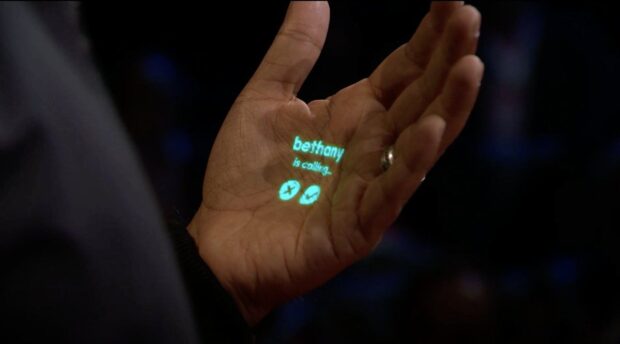Forget smartphone screens, this device puts notifications in the palm of your hand

Photography Courtesy of Zarif Ali / Twitter©
Humane is a start-up founded by two former Apple executives: Imran Chaudhri, a designer who worked on the iPhone user interface, and Bethany Bongiorno, a software engineering manager. It was during a TED talk in Vancouver that Imran Chaudhri caused a sensation by showcasing an amazing concept in the form of a small device, essentially a wearable that can be attached to an item of clothing like a brooch.
This “smartphone” of the future is mainly controlled by voice and hand gestures. When called upon, it can project multiple pieces of information onto the user’s own hand. It then becomes possible to interact with that information to take a call, for example, or to display your heart rate during exercise or manage playlists.
As Humane is first and foremost a specialist in artificial intelligence, this device is also equipped with some spectacular functionalities, starting with its translation feature. It can, in fact, reproduce the speaker’s voice to translate any spoken sentence and then deliver the end result in their voice.
Ultimately, Humane’s goal is to build the first AI hardware and software services platform, billed as respecting lofty principles like being innovative, ethical, efficient, inclusive, and human-centered. In the meantime, this is still only a concept, closer to an intelligent assistant than a real smartphone, although it paves the way for new technologies and uses.
This is not the first time that human skin has been used as a vector for technology. In the past, the Massachusetts Institute of Technology (MIT) partnered with Microsoft to develop smart tattoo technology, designed for controlling certain devices remotely through simple actions on the skin. Japanese researchers have since developed patches that allow the real-time monitoring of the wearer’s temperature, blood sugar level, or blood pressure.
Now that the technology exists, it remains to be seen how it might be applied and brought into mainstream use.
MORE: The Foldable Smartphone: Is It Here To Stay?